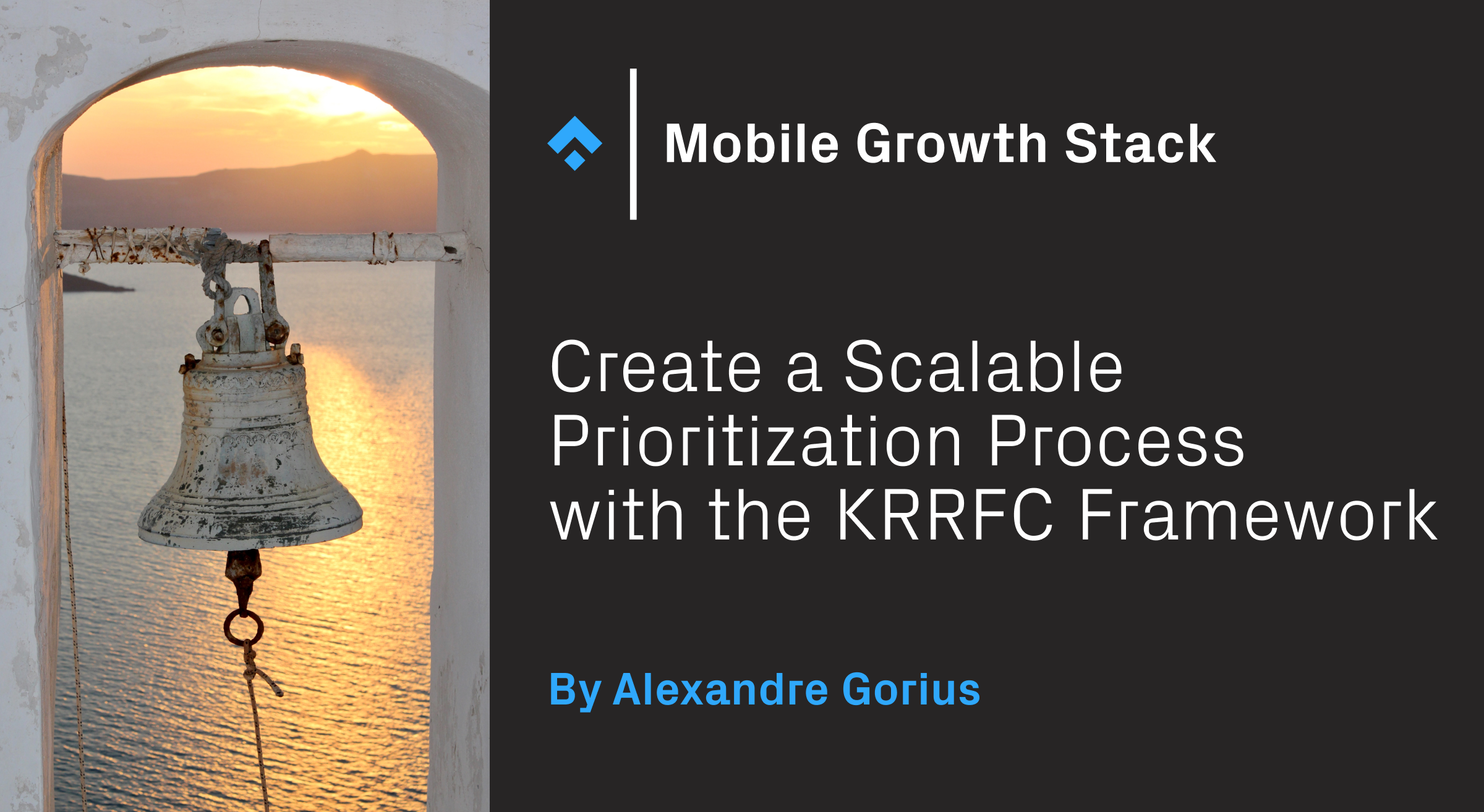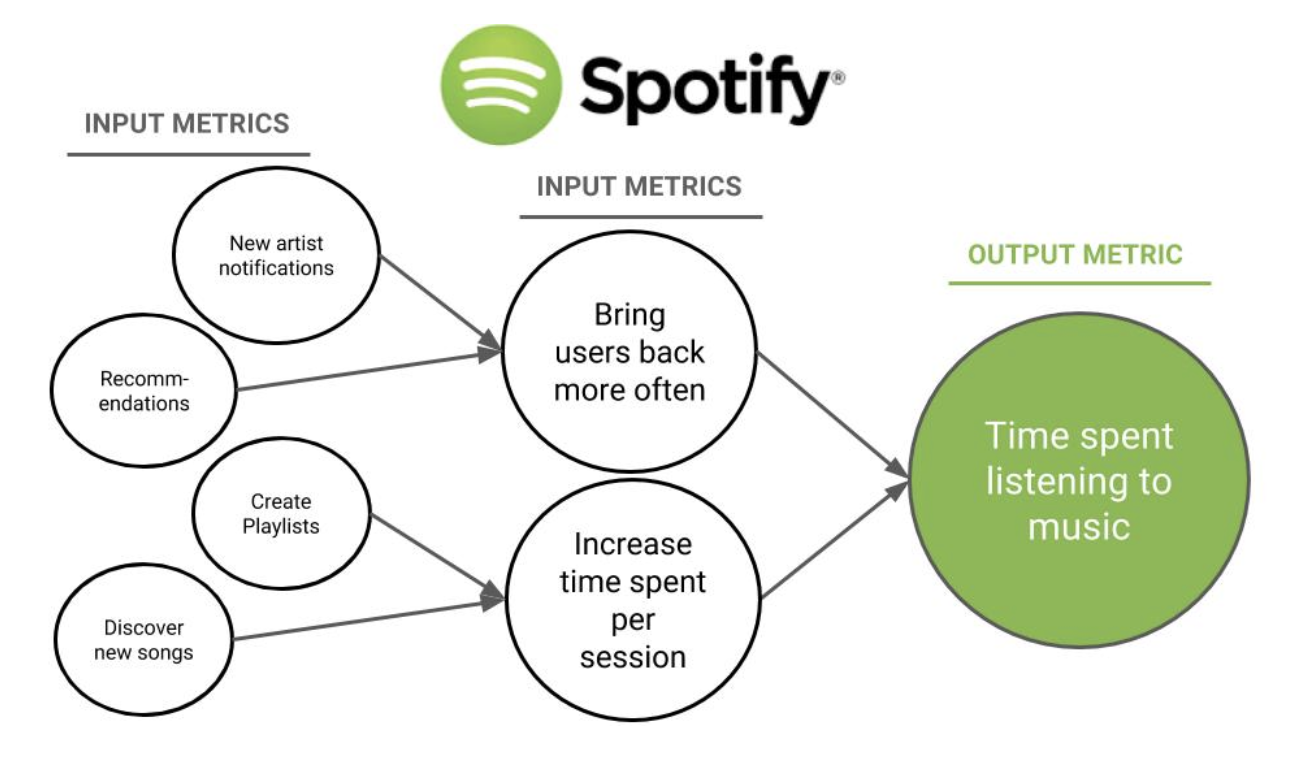
After a successful brainstorming session, it’s always challenging organizing and prioritizing your new list of campaigns.
As your team grows, it’s also possible that you won’t be able to take part in all of the ideation sessions. If this is the case, you want your team to be able to prioritize the new campaigns on their own.
In both instances, what you need is a prioritization framework that will secure an impactful CRM execution and free some precious time for you to focus on your team’s growth.
There are a few prioritization frameworks out there, such as Impact Confidence Ease, but they haven’t been created specifically for CRM. What I’m about to present is a campaign prioritization framework made especially for this purpose.
Reach Relevance Frequency (RRF)
A few years ago, Phiture co-founder Andy Carvell introduced the Reach Relevancy Frequency (RRF) framework for prioritizing notifications impact based on their potential to move growth metrics. While this method was originally developed from Andy’s experience building and scaling a real-time push notification service at SoundCloud, we’ve found that it’s also a useful framework for prioritizing lifecycle campaigns across various channels, including Email, Push, SMS, and In-App Messaging.
For each new campaign idea, this framework asks you to subjectively rate out of 5 each of the following criteria:
- Reach: how well does your campaign cover the user base? 5 would be a campaign sent to all users, 1 would be a “niche” campaign sent to a small segment.
- Relevance: how relevant is the campaign to your users? Relevance often correlates with personalization. A campaign promoting content through highly personalized recommendations would get 5 points, while a generic message sent to a poorly defined audience would rate 1.
- Frequency: how frequently will the campaign be sent to the target users? Depending on your natural usage frequency, a daily/weekly push might rate 5 (depending on the natural usage frequency of the product), a single-time blast campaign would rate 1.
The RRF framework is great to get an idea of the most impactful campaign in your backlog. Nonetheless, it is not precise enough for a really granular campaign prioritization within a CRM team.
The first reason for this comes from the fact that campaigns with the highest RRF scores are often the most complex to deploy. Let’s look at the difficulties that come with creating a 5x5x5 campaign.
- Relevance: when it comes to high personalization, deploying a 5-star relevance campaign will require you to:
- Segment the audience: This means having the necessary user attributes and behavioral events meticulously implemented.
- Curate or otherwise personalize content relevant to each segment.
- Personalize deeplinks to the same level (i.e. have the ability to deeplink separately for each piece of content, screen, feature, etc.)
- Create personalized copy/assets for each variant.
- Frequency: a killer frequency that also maintains high relevance requires a massive curation effort, or user-level personalization (often achieved through algorithmic means and – increasingly – with the help of machine-learning). It also requires an automation process to change the variants each week, or a huge manual effort from the team.
- Reach: covering the entire user base by maintaining high relevance and frequency multiplies the efforts by the number of segments in the population.
As a result, if the team picks up the campaigns at the top of an RRF-score-ordered backlog, they may spend a tremendous amount of time and effort deploying a single, complex campaign. Our goal being to maximize both impact and speed, we understand the RRF framework could be incomplete if you’re seeking full autonomy and high-cadence CRM experimentation. The complexity of the campaign must be taken into account in the campaign prioritization.
Reach Relevance Frequency Complexity (RRFC)
C (for Complexity) is a score from 1 to 5 that counterbalances the total RRF score. As a result, we divide RRF by complexity to compute the RRFC score.
Take the example of a music streaming app: we want to send a weekly, custom-designed in-app message recommending a new song to a user based on their taste:
- First, we need to create as many segments as there are music preferences.
- Then, we need a dynamic user property (aka attribute) that changes based on the user’s listening and likes history.
- We also need a curation team, or an advanced algorithm, to select an engaging song for each segment.
- We need to automatically insert the deeplinks, song title, artist, and visuals into the campaign, or we need someone taking an hour or two each week to do this and conduct Quality Assurance.
This campaign might not be prioritized as it takes a lot of resources and there may be simpler, more powerful campaigns to focus on first. The C score reflects that and will lower the priority of this campaign in the total ranking.
Again, we’re seeking to optimize impact efficiency:
![]()
By adding Complexity to the framework, your prioritization now takes into account these inefficiencies, conserving team resources. If you’re the head of a single team and your objectives are to improve retention in general, this should set you up for success.
Key [Performance Indicator] Reach Relevancy Frequency Complexity (KRRFC)
Though some of you may be accountable for granular KPIs, if your team is big, you might even get several CRM teams working on different elements of your CRM initiatives, whether split by lifecycle stage or geographical markets.
The RRFC score optimizes for impact efficiency, regardless of your team’s objectives. As a result, if your monetization team is having a Blue Sky Brainstorm and blindly follows the RRFC prioritization, they might get to work on activation campaigns. To avoid missing your team’s targets and KPIs, we need to add the last piece to our prioritization puzzle: the KPI relevancy.
A campaign scoring 5 in KPI relevancy will move the needle; a 1 could be relevant to the user, but not to your business. This score is the only one to be attributed a possible 0 to disqualify the campaigns that don’t serve your objectives at all.
Now, how should you determine whether a campaign is relevant to your business?
The main strategy here is to check if the conversion metrics of your campaign are tightly linked to your output KPI. The main difficulty here is to make sure your KPIs are well defined.
A couple of existing frameworks can help you with this task.
First, you can use your company’s North Star Metric. If you work at Spotify, and your ultimate goal is to increase listening time, then a campaign motivating producers to publish would score lower than a content recommendation campaign tailored to their tastes.
Now, this would push the Spotify team to neglect producers, which could result in getting less quality content in the long run and harm listening time. This is why the North Star Metric can be limiting for this exercise. If you’re not a fan of this metric, you could use Brian Balfour’s methodology to set growth metrics. This methodology allows you to define not one, but a “constellation” of output indicators that reflect your business growth, such as listening time and content production. These indicators are broken down into input metrics, which are the actions influencing an output metric. Brian advises to “drill down until you’ve got a set of actionable input metrics that you can impact directly”.

Your campaign KPI relevancy will depend on how strongly the campaign’s conversion metrics influence your output metrics. A method can be to see how far these conversion events are located in your metrics tree. But the best evaluation can be done through Acknowledgment Interest Conversion (AIC) framework.
To completely nail your KPI definition, the AIC framework, developed at Phiture in collaboration with Clevertap is a powerful tool to prioritize your input metrics. The AIC breakdown will help you evaluate how strongly your conversion metrics are moving the needle.
Always monitor your CRM business impact by comparing the KPI performance of your master control group against the one of the targeted group which received your campaigns.
With this 5th score, your CRM execution is sure to be impactful, efficient, and business-oriented. With time, filling these 5 scores is fast and painless for any member of the team. Your team gets empowered by a new autonomy and you can detach yourself from the execution and completely focus on your team’s growth.
Wrap up
Phiture’s RRF framework is a great tool to define the impact a campaign will have on your users. However, it will not differentiate a low-hanging fruit from a hassle, nor will it insure you that the campaign will help you complete your objectives at the end of the quarter. The KRRFC framework aims at complementing RRF to solve these problems and provides independence to your CRM team by deciding which campaigns to send next.
First, the idea was to adjust the priority of very hard campaign ideas and hence increase the priority of comparatively easy campaigns (with a high enough RRF) as they represent ‘quick wins’. Dividing RRF by a complexity score will make sure to maximize both impact and speed and optimize your impact efficiency. You can evaluate a campaign’s complexity by its technical challenges (events, custom attributes, or deeplink implementation) or its resource challenges (curation, designs, coding templates).
Second, we want to make sure your campaigns will have an impact on your business KPIs. Multiply your RRFC by a 0 – 5 KPI relevancy score to put your most impactful campaigns at the top of the list and eliminate those that won’t move the needle. The evaluation of this score can be instinctive and straightforward for some. For the others, combine Brian Balfour’s methodology to set growth metrics and the AIC framework to nail your output and input KPIs. Then, score your campaign by evaluating how the conversion metrics correlate with your output KPIs.
Practice scoring every campaign after a brainstorming session with your team. In a short time, everyone will be able to run this operation on their own. Not only will this save you a lot of time by removing all your prioritization meetings, but it will also help your team become independent.
In my experience, increasing our team’s autonomy is improving our efficiency. With the KRRFC framework, we’ve significantly reduced both our time to deployment and the number of stakeholders needed to deploy; but most of all, we set our CRM direction for business impact. How are you handling campaign prioritization in your team? Is the KRRFC something you could use? Let me know by sending an email!


















